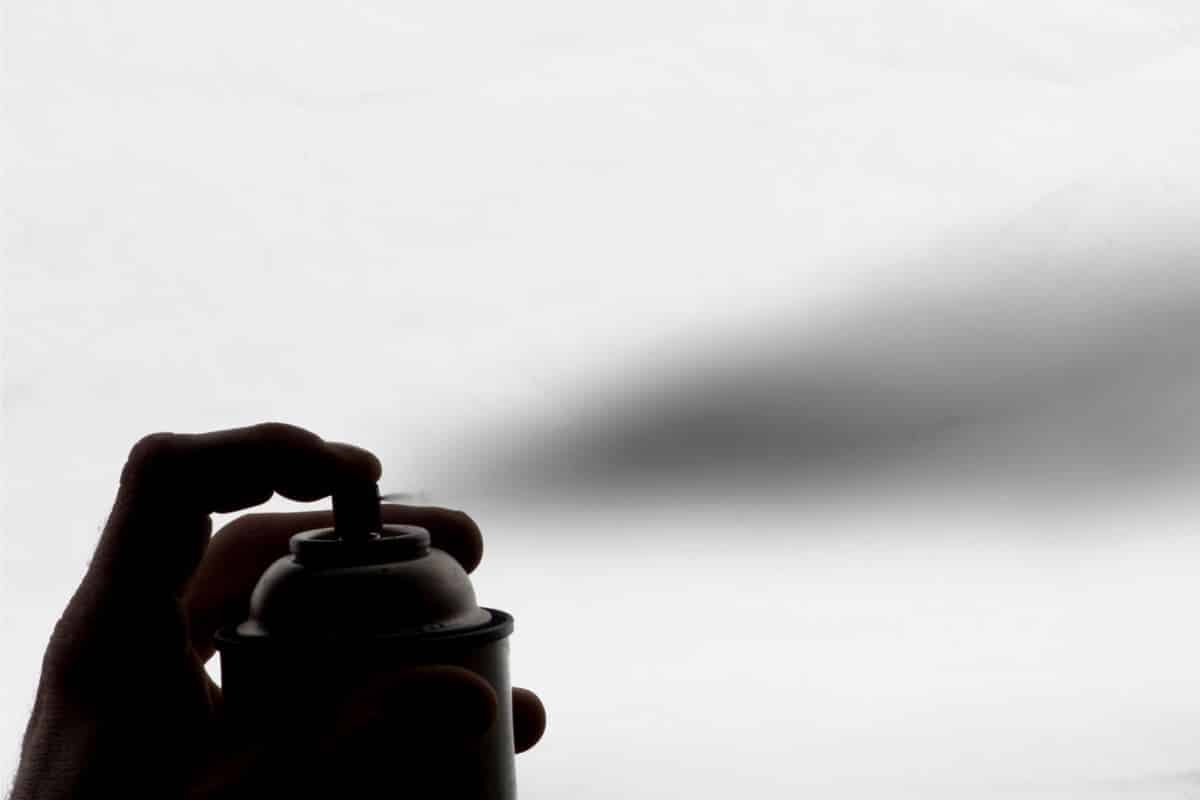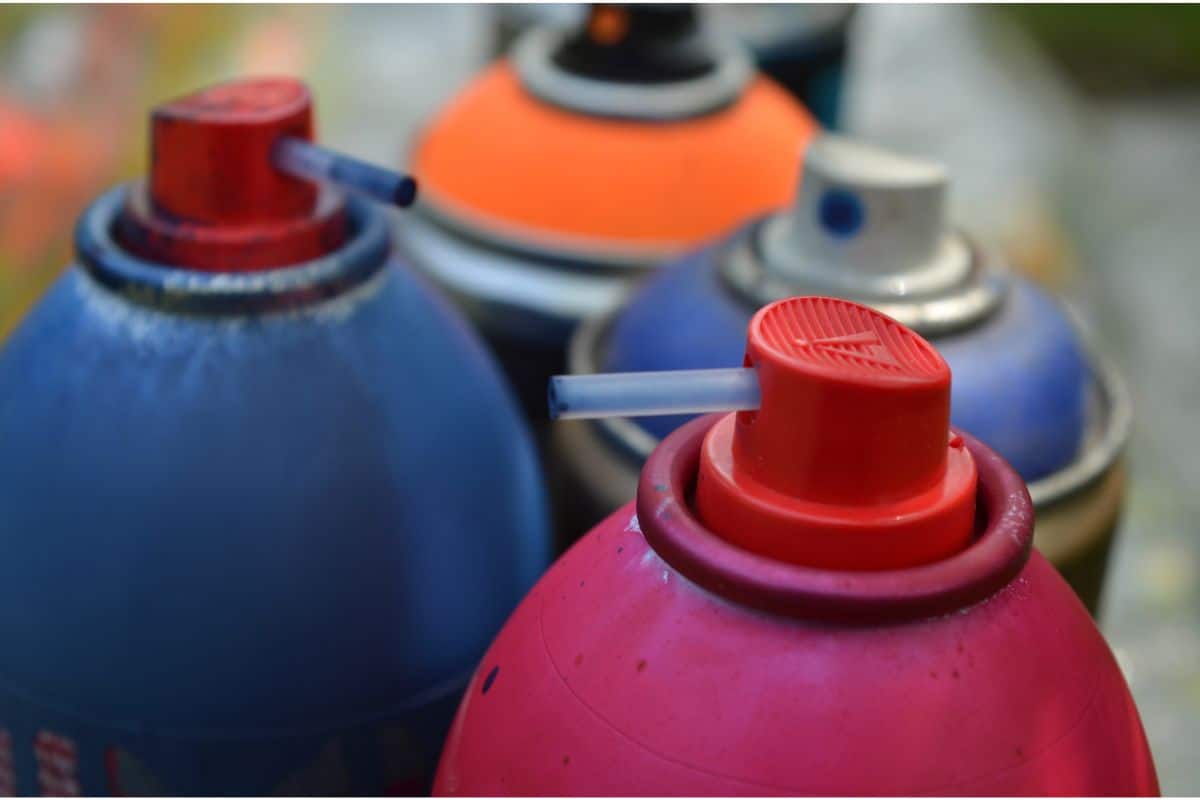Painting any of your valuable objects might seems to be a difficult process if you…
Can You Spray Paint Glass?
Spray painting isn’t the easiest task, especially for those new to it. You need to figure out what works and what doesn’t and what to do to successfully paint each material.
So it’s no surprise that many beginner spray painters ask the question, “can you spray paint glass?” The answer to that question is a resounding: yes!

You can spray paint glass, but it does require a bit of preparation first. When spray painting glass, you can’t just spray the paint on and call it a day.
It’s essential that you prepare the glass you want to paint first, and you also need to find the right spray paint. Not all paints are suited to glass, so you need to read the label first.
You’ll also need to consider whether you’ll be handling the glass or if it’s for display purposes only. With our guide, you’ll know exactly what you need to do.
Preparing Your Project
Preparation is essential when you want to begin the process of spray painting glass. You can’t just spray the glass and say you’re done.
There are a few steps you have to take first, so let’s go into a bit more detail.
Clean The Glass First
When spray painting glass, you must first clean your glass thoroughly with soapy water. Whether you’re painting a normal glass, vase, or an old bowl, it’s essential you wash and dry them first.
The same should also be done if you paint a table or glass. You don’t want the glass to have dust or dirt on them before you clean them.
Once you’ve washed them, leave them to air dry, so you can ensure they aren’t wet when you paint them.
Cover Any Contact Areas On The Glass
If you’re spray painting a glass you intend to drink from in the future, you should cover the areas where your mouth will have contact.
Use some tape to ensure you won’t get any paint or primer on these areas. You don’t want to get any paint or primer in your mouth later, so it’s best to leave these areas free from any chemicals.
Use Rubbing Alcohol On The Glass
Spray paint is oil-based, so you should use rubbing alcohol to help the adhesion process go smoothly. To do this, you could submerge your glass in a shallow bowl of liquid alcohol and rotate it.
If you’re using a larger glass, you should use a cloth instead.
For safety reasons, we recommend you do this in a well-ventilated area. Rubbing alcohol can disorient you if you inhale it in a large amount.
Once you’ve coated your glass with rubbing alcohol, you should put it in direct sunlight so that the spirits evaporate while they’re drying.
Apply Primer To The Glass
Admittedly, you don’t have to use primer on glass. This is optional, so if you don’t have primer or don’t want to use it, you don’t have to.
However, if you do use primer, it can help amplify the finished product once the paint dries.
Using a primer will give your product a smoother finish. Most spray paints are oil or acrylic-based, which makes them suitable for glass surfaces.
However, that doesn’t mean they’ll always guarantee the best results. A primer will ensure the paint sticks to the surface better, so you’ll get better results.

Cover Your Work Surface
Before you start painting, you should cover the surface’s around where you’ll be painting. You don’t want the paint to get everywhere.
If you’re manipulating a small glass, you should also add some paper that you can rotate, especially if you’re inside.
However, should you spray paint outside, you shouldn’t have any issue walking around the glass to ensure it’s painted.
Spray Painting Glass
Once you’ve accomplished these steps, you can start spray painting your glass. Before you start painting, here are a few tips we have for you.
Check Your Spray Paint
Earlier, we briefly touched upon needing the right spray paint to use. When you’re buying your spray paint, you’ll find that it will say on the label whether it’s suitable.
If you choose the wrong one, it won’t stick to the glass, regardless of what you do. The good news is that when spray painting your glass, you’ll find a variety of different sheens and colors available.
You Don’t Have To Paint The Whole Glass
One of the best things about glass is that it’s transparent so you don’t have to paint it on one side. If you’re painting something to store anything, you should only paint on one side.
Focusing on one side will ensure that you don’t scratch the paint. This way, you won’t have to worry about ruining the paint if you paint a side that won’t be handled much.
Apply Several Thin Layers
You shouldn’t expect it to be finished with only one layer of glass. Your first layer will be translucent and won’t have much color.
Spraying too much will make the paint too heavy, and it will run and drip. Patience is necessary when spray painting glass, so make sure you apply a thin layer at a time.
Keep A Steady Hand
The most important part of spray painting glass is to keep a steady hand. Thin layers need good control, and you should make sure that you’re at a good distance from your work.
Try to spray a smooth layer at a time, but don’t stop in between. It’s best to spray lightly without any interruptions and then pause. Keep control of your finger on the nozzle and get smooth results.
Final Thoughts
Spray painting glass isn’t impossible, especially if you have the right equipment. Once you know how to paint glass, it’s a simple process that requires preparation and patience first.
It’s best not to be discouraged if you don’t get the best results straight away. Instead, focus on each layer and keep going until you feel that your glass spray painting project is finished.
